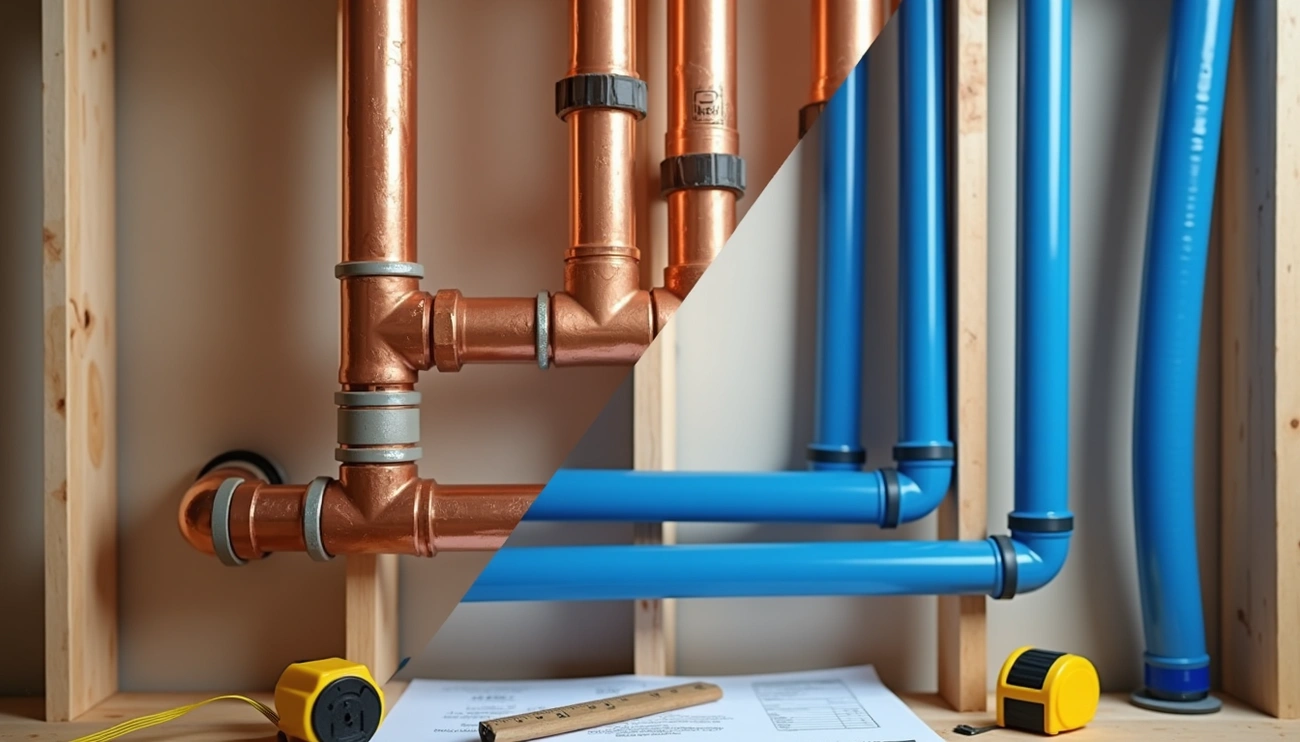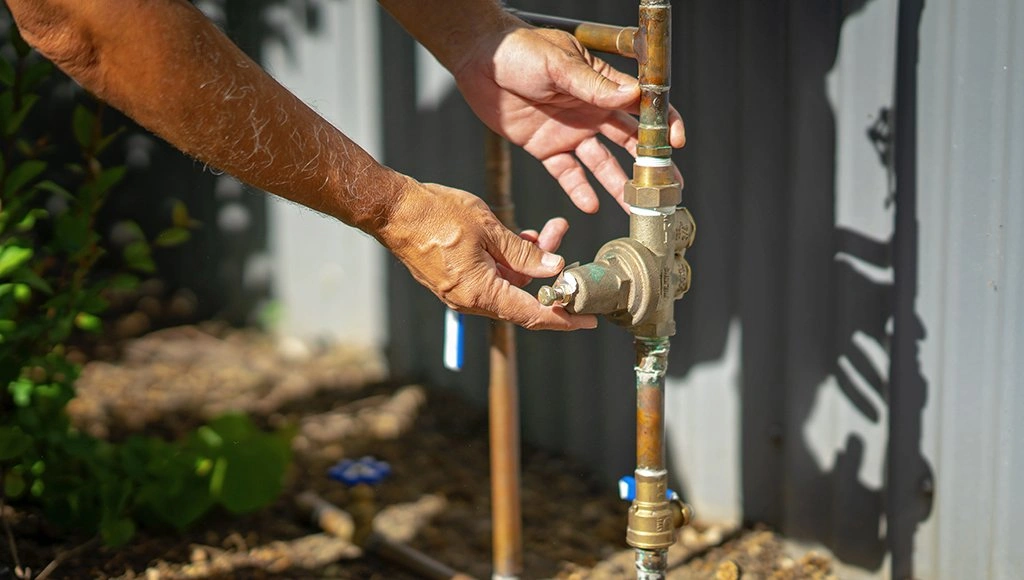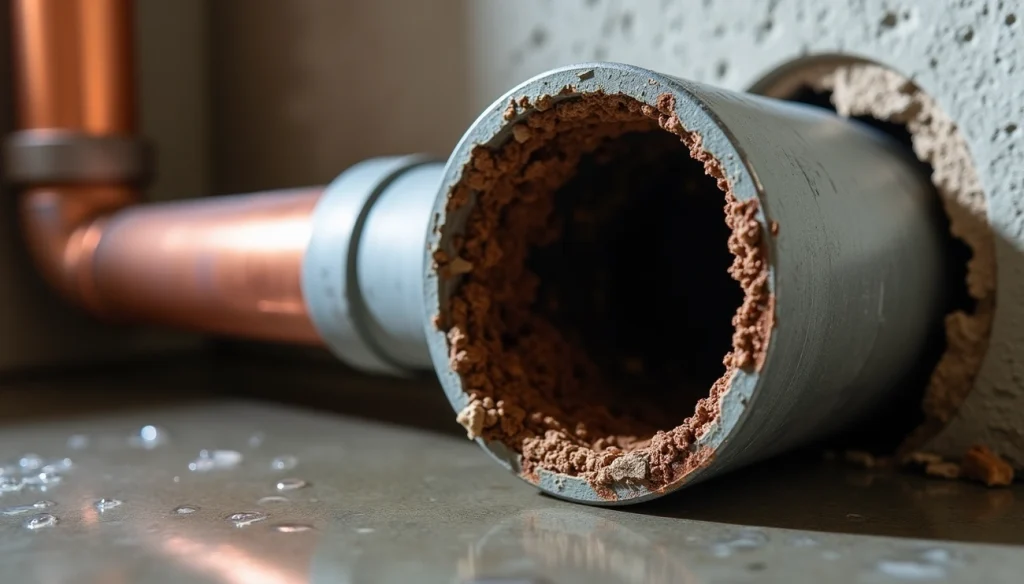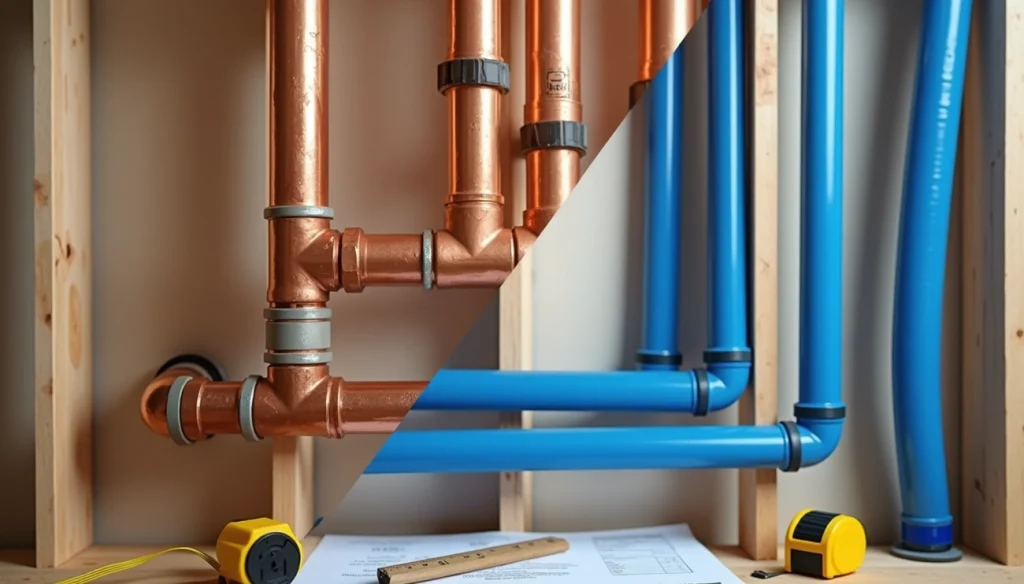California homeowners who need to choose between PEX vs copper face a major money decision that will affect their property for decades. Copper pipes can last an impressive 50 to 70 years. PEX offers a shorter but still solid lifespan of 30 to 50 years. The cost difference tells an interesting story. Installing copper water pipes costs 58 to 68 percent more than PEX. Homeowners pay $8,000 to $10,000 for copper installations, while PEX remains more affordable at $4,000 to $6,000.
The copper vs PEX debate has seen a dramatic change over the last several years. Copper was the go-to choice for California homes built before the 2000s. Today, about 60% of new homes in the region use PEX piping. PEX’s growing popularity comes from both short-term and long-term savings. The ongoing copper shortage makes this even more relevant. PEX tubing vs copper brings different challenges in California’s unique conditions. Earthquake resistance and water quality play key roles in the decision. Smart homeowners look beyond installation costs. They factor in copper vs PEX health considerations, maintenance needs, and energy efficiency. These elements help determine which option saves more money in 2025 and beyond.
Material and Installation Costs in 2025
The cost of choosing between PEX and copper piping is way beyond the reach and influence of material costs alone. California homeowners need to understand the complete picture to make informed decisions that will affect their budgets for decades.
PEX vs Copper Material Price Trends in California
The material cost difference between PEX and copper remains substantial in 2025. PEX piping typically costs between $0.40 and $2.00 per linear foot, which makes it nowhere near as expensive as copper, which ranges from $2.00 to $8.00 per linear foot. Copper prices tend to fluctuate with metal markets, and this creates budget uncertainty for larger projects. PEX prices stay relatively stable. PEX installations can cost 25-40% less overall.
Labor Costs: Soldering vs Crimping
Labor expenses make up about 70% of total repiping costs, which makes installation method a vital factor. Copper pipe installation needs precise cutting, measuring, and soldering at every joint, with labor costs between $4.00 and $10.00 per linear foot. PEX installation costs just $1.50 to $3.00 per linear foot because its flexibility allows:
- Continuous runs without many fittings
- Faster installation without soldering
- Easier navigation around obstacles
Plumbers can install PEX up to three times faster than copper, which leads to lower labor costs.
Cost of Fittings and Tools for Each System
Specific fittings and specialized tools for each system affect the overall expenses. Copper connections require fittings that cost $1.00 to $3.00 each, plus soldering equipment. PEX fittings cost between $0.50 to $2.00 each, and you’ll need these items upfront:
- PEX crimping tools ($80-100 for quality versions)
- Pipe cutters (approximately $8)
- Crimp rings for secure connections
The overall fitting costs stay lower for PEX systems because they need fewer connection points, despite the upfront tool investments.
Average Repipe Cost for a 1,500 sq ft Home
A standard 1,500 square foot California home’s copper repiping costs between $8,000 and $10,000. The same project with PEX would cost much less—typically $4,000 to $6,000. This big difference makes PEX an attractive option for cost-conscious homeowners throughout Los Angeles and San Bernardino counties.
Contact Western Rooter today for a free estimate on your repiping project!
Durability and Maintenance Over Time
The cost of installation is just the beginning. Your long-term investment in California homes depends heavily on how long these piping systems last.
Expected Lifespan: 30-50 Years vs 50-70 Years
Copper pipes can last an impressive 50 to 70 years with proper care. PEX tubing serves well for 30 to 50 years, which is about two decades less than copper’s lifespan. PEX pipes don’t last as long when they’re exposed to very hot water (180°F or higher) or water with high chlorine content.
Freeze Resistance: PEX Flexibility vs Copper Brittleness
PEX shows better freeze resistance in colder parts of California. The material can expand when water freezes inside, which makes it less likely to burst than rigid copper pipes. Copper pipes often become brittle and crack as freezing water expands. This makes PEX pipes a great choice for older homes that don’t have much insulation.
Corrosion and Scaling: Water Quality Impact
Water chemistry plays a big role in how copper holds up. Acidic water can speed up copper’s deterioration. PEX stays strong whatever the water conditions might be, and it won’t corrode or scale. Water flows consistently through PEX throughout its life because minerals don’t build up inside.
Rodent Damage Risk: PEX Vulnerability
Rat incisors rank 5.5 on the Mohs hardness scale (diamond is 10), making them tougher than copper. These sharp teeth can chew right through plastic PEX tubing and cause serious leaks. Some California communities don’t allow PEX installation in areas where rodents are common.
Maintenance Frequency and Cost Over 10 Years
PEX needs less upkeep because it has fewer joints and seams than copper systems. Minerals don’t stick to its smooth inner surface, but copper might develop pinhole leaks from corrosion over time. Copper repairs can get complicated and expensive, especially if you have hard water.
Contact Western Rooter today for a free estimate!
Energy Efficiency and Water Quality Impact
Your plumbing system’s performance directly affects both comfort and utility costs. Let’s get into how PEX vs copper systems stack up beyond their price differences.
Thermal Conductivity: Heat Loss in Copper vs PEX
Copper conducts heat about 800 times better than PEX. Hot water loses temperature much faster when traveling through copper pipes, which wastes energy. Users often run taps longer while waiting for hot water, and copper pipes waste about 32% more water than plastic pipes. PEX’s natural insulating properties help maintain steady temperatures throughout your California home.
Water Quality: Copper’s Antimicrobial vs PEX’s Stability
The EPA has registered copper’s natural antimicrobial properties that stop bacterial growth inside pipes. PEX resists corrosion completely, even when exposed to aggressive water conditions. Some PEX pipes might give off a slight “plastic” taste at first, but this usually goes away after you flush the system a few times. Copper can leach into drinking water in homes with acidic water.
Noise and Water Hammer: Which Is Quieter?
PEX creates a quieter home environment by absorbing sound and pressure changes. You won’t hear the typical “water hammer” noise that copper systems make when you install PEX. PEX’s flexibility naturally reduces noise transmission throughout your plumbing system.
Insulation Needs and Energy Savings
One inch of insulation on bare copper pipes cuts heat loss by 76%. Both materials work similarly with insulation, and their differences become minimal once properly insulated. California homes benefit most from a well-designed PEX network combined with proper insulation.
Contact Western Rooter today to get a free estimate!
California-Specific Considerations
California’s environment creates special challenges that affect your choice between pex vs copper California plumbing systems.
PEX vs Copper in Earthquake Zones
Pipe flexibility plays a vital role across California’s seismic zones. PEX shows better performance during earthquakes because it absorbs shocks and vibrations without cracking. Copper pipes stay rigid and break more easily during seismic events. PEX tubing’s natural flexibility makes it a better choice for areas prone to earthquakes.
Outdoor Use: UV Resistance and Fire Safety
Each material shows specific advantages for outdoor installations. Copper completely resists UV radiation. PEX breaks down faster when exposed to sunlight. You need to shield or sleeve PEX from UV exposure. Direct sunlight damages its polymer structure and leads to complete failure. Copper’s non-combustible properties shine in wildfire-prone areas like eastern San Diego County. Its high melting point of 1,980°F provides better safety.
Building Code Compliance in Los Angeles and San Bernardino
California’s 2025 Building Standards Code now accepts PEX more broadly. Before its inclusion in the California Plumbing Code, 180 municipalities had approved PEX as an alternative material. Both materials must meet California’s strict requirements for lead content—keeping it below 0.25% in components that touch drinking water.
Hybrid Systems: Mixing PEX and Copper for Cost Efficiency
Many California homes now have hybrid systems that combine both materials. This approach uses copper’s benefits in outdoor and high-heat applications along with PEX’s earthquake resistance and lower costs.
Contact Western Rooter today for a free estimate!
Conclusion
Your choice between PEX and copper plumbing for your California home comes down to your needs, budget, and long-term plans. PEX brings big upfront savings and costs 40-60% less than copper installations in a typical 1,500 square foot home. Copper’s impressive 50-70 year lifespan compared to PEX’s 30-50 years makes sense if you plan to stay in your home for decades.
Both materials have clear benefits. PEX works great in earthquake-prone areas because it’s flexible. Copper shines in outdoor use with better UV resistance and fire safety. On top of that, PEX saves energy through better thermal insulation and cuts down on those annoying water hammer noises you often get with copper systems.
California’s unique environment should shape your decision. PEX’s shock absorption helps in seismic zones, while copper’s non-combustible nature suits wildfire-prone areas better. Water chemistry is another big factor – PEX stays strong whatever the water conditions, while copper can wear down faster in acidic water.
Smart homeowners across Los Angeles and San Bernardino counties now use hybrid systems. They put copper outside and PEX inside, getting the best of both materials while avoiding their drawbacks.
PEX has become popular in new builds, accounting for about 60% of new California homes. Still, you need expert advice to make the right choice. Your home’s setup, water quality, and local building codes are vital in picking the system that saves you more money long-term.
Contact Western Rooter today for a free estimate!










